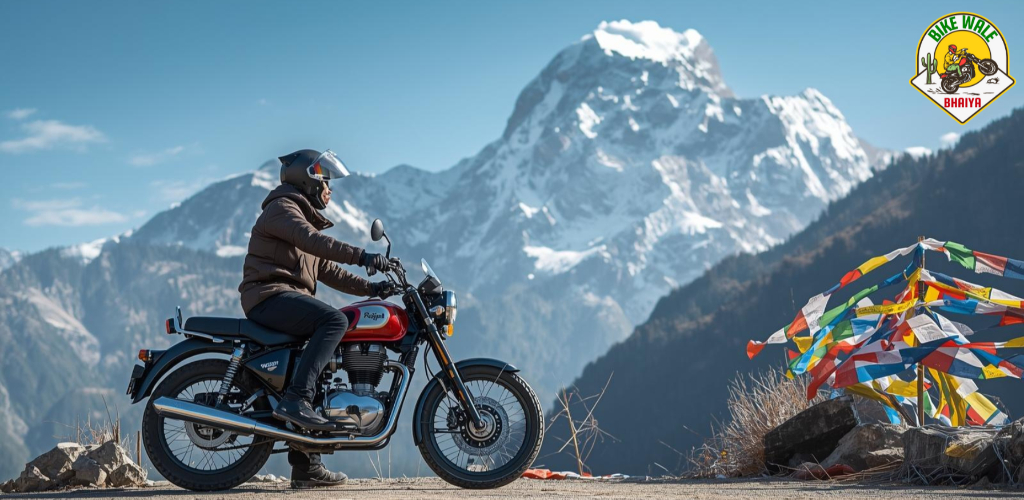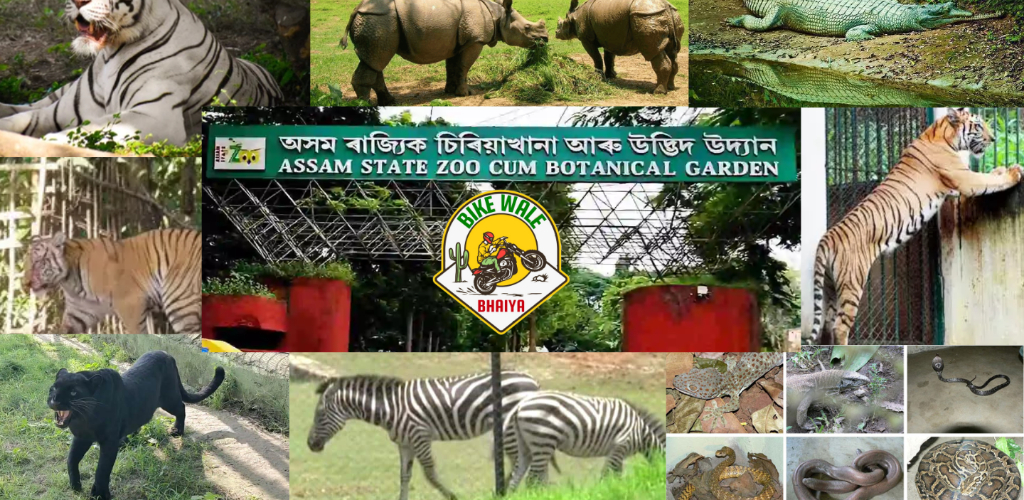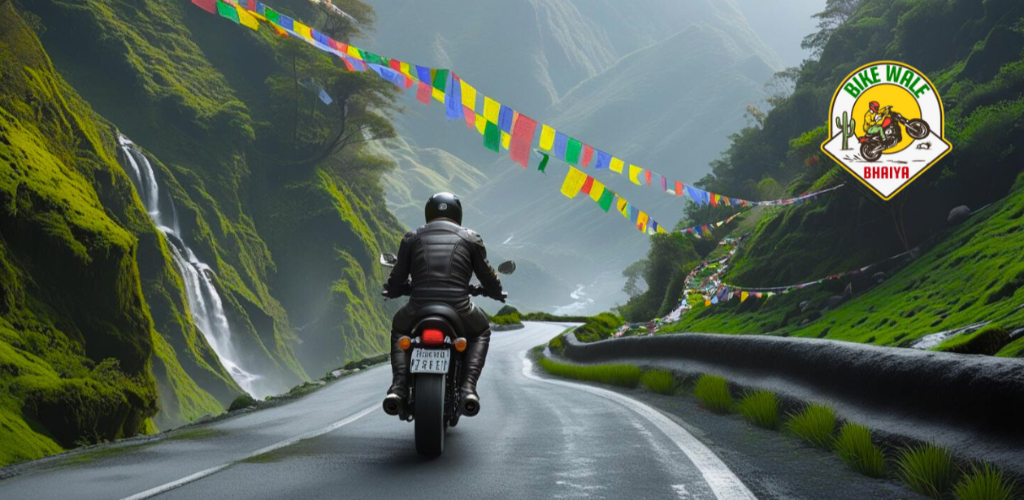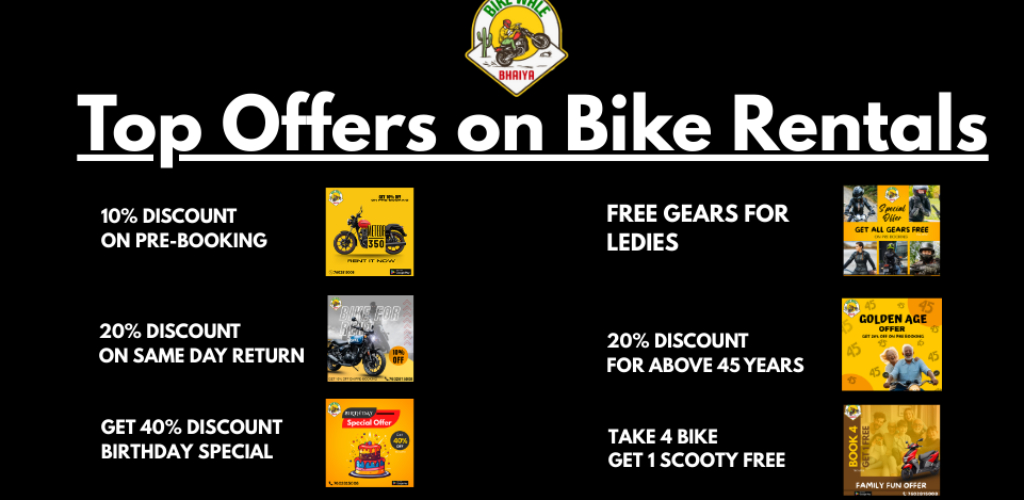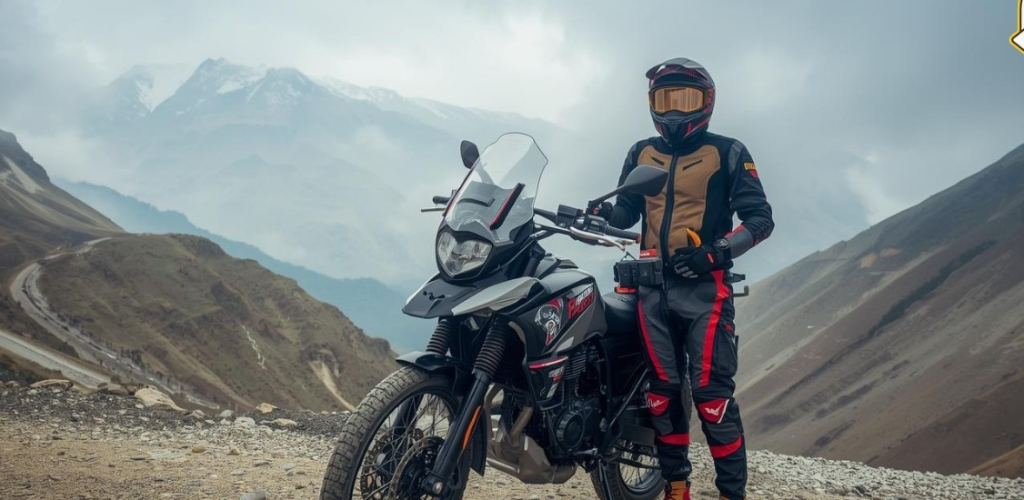
Gangtok, with its breathtaking Himalayan roads and stunning landscapes, is a rider's paradise. However, mountain riding comes with unique challenges – from permit requirements and altitude considerations to navigating sharp bends and changing weather conditions. This comprehensive guide to riding in Gangtok covers everything you need to know for a safe, legal, and unforgettable riding experience in Sikkim.
______________________________________
Part 1: Understanding Permit Requirements
Essential Permits for Riding in Sikkim
1. Inner Line Permit (ILP)
• Required for: All Indian citizens outside Sikkim
• Where to get: Sikkim Tourism Office, Gangtok or online portals
• Documents needed: ID proof, photos, application form
• Validity: Usually 15-30 days
• Cost: Nominal fee (₹100-₹200)
2. Protected Area Permit (PAP)
• Required for: Foreign nationals and specific restricted areas
• Where to get: Registered travel agents in Gangtok
• Documents needed: Passport, visa, photos, special application
• Validity: Limited period with specific routes
• Important: Some areas completely off-limits for foreigners
3. Special Area Permits
• Nathula Pass: Separate permit required for all visitors
• Tsomgo Lake: Permit needed even for Indian citizens
• North Sikkim: Special permit for protected areas
• Processing: Through registered agents only
Permit Application Tips
• Apply early - processing can take 24-48 hours
• Use registered agents - avoid touts and unauthorized operators
• Carry multiple copies - keep permits accessible during rides
• Check validity dates - don't let permits expire during your trip
______________________________________
Part 2: Safety Essentials for Mountain Riding
Pre-Ride Safety Checklist
Bike Inspection:
• Brakes: Test front and rear braking efficiency
• Tyres: Check pressure and tread depth
• Lights: Ensure all lights and indicators work
• Engine: Check oil levels and unusual noises
• Documents: Rental papers, license, permits, insurance
Personal Safety Gear:
• Helmet: Always wear a certified helmet
• Protective Clothing: Jacket, gloves, sturdy shoes
• Eye Protection: Sunglasses or helmet visor
• First Aid Kit: Basic medical supplies
• Emergency Contacts: Save local numbers
Mountain Riding Techniques
Uphill Riding:
• Maintain momentum before steep climbs
• Use lower gears to prevent engine strain
• Avoid sudden acceleration on slippery surfaces
• Keep right for descending vehicles
Downhill Riding:
• Use engine braking rather than constant brake application
• Shift to lower gears for controlled descent
• Avoid overheating brakes by using intermittent braking
• Maintain safe speed - gravity increases speed naturally
Cornering on Hairpin Bends:
• Slow before the bend, not during
• Look through the corner where you want to go
• Maintain steady throttle through the bend
• Honk before blind corners - standard mountain practice
______________________________________
Part 3: Understanding Gangtok's Road Conditions
Types of Roads You'll Encounter
1. National Highway 10
• Condition: Well-maintained but winding
• Challenges: Heavy traffic, sharp bends
• Areas: Gangtok to Siliguri corridor
2. Mountain Roads to Tourist Spots
• Condition: Variable - good to average
• Challenges: Landslide zones during monsoon
• Areas: Gangtok to Tsomgo Lake, Nathula Pass
3. City Roads in Gangtok
• Condition: Narrow and steep
• Challenges: Limited parking, pedestrian traffic
• Areas: MG Marg, residential areas
4. Village and Rural Roads
• Condition: Often rough and unpaved
• Challenges: Poor maintenance, animal crossings
• Areas: Routes to remote monasteries and villages
Seasonal Road Conditions
Summer (March-June):
• Best conditions for riding
• Clear roads with minimal disruptions
• Ideal for high-altitude routes
Monsoon (July-September):
• Frequent landslides and roadblocks
• Slippery roads with reduced visibility
• Caution needed on mountain sections
Winter (October-February):
• Snow and ice on high-altitude roads
• Some routes closed (Nathula usually closed Dec-Feb)
• Cold weather affects bike performance
______________________________________
Part 4: Essential Documentation
Must-Carry Documents
Personal Documents:
• Valid Driving License
• ID Proof (Aadhar, Passport, Voter ID)
• Permits (ILP/PAP/Special Area Permits)
• Emergency Contact Details
Bike Documents:
• Rental Agreement Papers
• Insurance Documents
• Road Tax and Pollution Certificates
• Emergency Support Numbers
Digital Backups
• Photos of all documents on your phone
• Emergency contacts saved offline
• Offline maps downloaded
• Important numbers including rental company support
______________________________________
Part 5: Weather Preparedness
Understanding Mountain Weather
Temperature Variations:
• Gangtok City: 15°C to 25°C (varies by season)
• Tsomgo Lake: 5°C to 15°C (colder at high altitude)
• Nathula Pass: -5°C to 10°C (can drop suddenly)
Weather Patterns:
• Mornings: Often clear with best visibility
• Afternoons: Clouds usually gather by 1-2 PM
• Evenings: Possible rain or fog
• Best riding time: Early morning to early afternoon
Clothing and Gear for Changing Weather
Layering System:
• Base Layer: Moisture-wicking thermal wear
• Mid Layer: Fleece or wool for insulation
• Outer Layer: Waterproof and windproof jacket
• Accessories: Gloves, scarf, warm socks
Weather-Specific Gear:
• Rain Gear: Waterproof jacket and pants
• Sun Protection: Sunglasses, sunscreen, lip balm
• Cold Weather: Thermal layers, balaclava
• Footwear: Waterproof boots with good grip
______________________________________
Part 6: Emergency Preparedness
Emergency Protocols
Breakdowns:
• Move to safe location away from traffic
• Use hazard lights and warning triangle if available
• Contact rental company support immediately
• Wait for assistance in safe location
Accidents:
• Ensure personal safety first
• Contact emergency services: Police (100), Ambulance (102)
• Inform rental company and insurance provider
• Document the scene with photos if possible
Medical Emergencies:
• Altitude sickness: Descend immediately, seek medical help
• Hypothermia: Warm the person gradually, seek shelter
• Dehydration: Rest, hydrate, seek shade
Important Emergency Contacts
• Police: 100
• Ambulance: 102
• Fire: 101
• Tourism Department: 03592-201443
• Bike Wale Bhaiya Support: 7602815008
______________________________________
Part 7: Local Riding Etiquette
Cultural Sensitivity
Monastery Areas:
• Dress modestly - cover shoulders and knees
• Remove shoes before entering prayer halls
• Maintain silence during prayers
• Ask permission before photography
Local Communities:
• Respect privacy - don't photograph people without permission
• Support local businesses - eat at local restaurants
• Learn basic greetings - "Namaste" is always appreciated
• Follow local customs - observe and learn
Traffic Etiquette
• Give way to army convoys and emergency vehicles
• Honk before blind corners - it's expected and safe
• Keep right on mountain roads
• Use parking spaces - don't block narrow roads
______________________________________
Part 8: Navigation and Route Planning
Essential Navigation Tips
Digital Tools:
• Download offline maps - network is unreliable in mountains
• Use GPS tracking for remote routes
• Save important locations - hotels, hospitals, rental shops
• Check weather apps regularly
Traditional Navigation:
• Carry physical maps as backup
• Ask locals for current road conditions
• Follow milestone markers on highways
• Note landmarks for return journeys
Time Management
• Start early - most routes are best ridden morning to early afternoon
• Factor in breaks - every 1-2 hours for rest and photos
• Consider daylight - aim to return before dark
• Account for weather - build in buffer time for delays
______________________________________
Part 9: Environmental Responsibility
Sustainable Riding Practices
Eco-Friendly Riding:
• Carry back all waste - no littering
• Use reusable water bottles and containers
• Minimize noise pollution in residential areas
• Stay on marked roads - avoid damaging fragile ecosystems
Supporting Local Economy:
• Choose local eateries over chain restaurants
• Buy from local artisans and shops
• Use local guides for better experiences
• Respect wildlife and natural habitats
______________________________________
Part 10: Why Choose Bike Wale Bhaiya?
Comprehensive Support Services
Pre-Ride Assistance:
• Permit guidance and application support
• Route planning based on current conditions
• Safety briefings for mountain riding
• Bike selection advice for your itinerary
During Your Ride:
• 24/7 support for emergencies and queries
• Roadside assistance across Sikkim
• Weather updates and route advisories
• Document support if needed
Quality Assurance:
• Well-maintained bikes for mountain conditions
• Regular safety checks and servicing
• Complete documentation and insurance
• Competitive pricing with transparent policies
Ready to ride? Contact us:
Website | Tariff | Contact
______________________________________
Final Safety Reminders
Last-Minute Checklist
• All permits and documents checked
• Bike thoroughly inspected
• Weather forecast reviewed
• Emergency contacts saved
• Safety gear packed and ready
• Route shared with someone reliable
Golden Rules for Mountain Riding
1. Ride within your limits - mountains demand respect
2. Expect the unexpected - weather and road conditions change rapidly
3. Stay alert - focus on the road, not just the scenery
4. Plan conservatively - build in extra time for delays
5. Enjoy responsibly - your safety is paramount
______________________________________
"The mountains are calling, but they demand respect. With proper preparation, the right permits, and safety awareness, your Gangtok riding adventure will be the experience of a lifetime."
